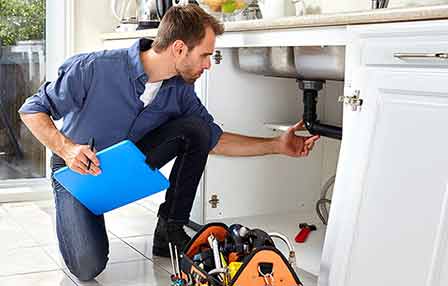When buying or selling a house, there is always some distrust between buyers and sellers. That’s because anyone selling a product might find it helpful to slightly – often unintentionally – exaggerate its qualities to get a higher price. Home buyers know this. Therefore, they do not believe everything a property owner says about their home.
That is why home inspections are such a necessity for both the buyer and the seller. Although the home inspector works for the buyer, they play the role of an impartial judge for both sides. Home inspectors are unbiased third parties who investigate the seller’s claims to know if everything they say about the property is accurate, explains Keyrenter Property Management Raleigh. Home inspections protect the buyer.
But the home inspection can also benefit the seller if the seller understands how home inspections work. By taking steps to prepare their home for it, a seller can use the home inspection to bolster buyer confidence in their property. In this way, while serving as a safeguard for the buyer, the home inspection also becomes a plus for the seller.
However, to get the full benefit of a home inspection, both buyer and seller need to know what to expect during the process. One of the central systems of the home that home inspectors will examine is the plumbing. Here, we explain what you – as a buyer or seller – should expect during a home plumbing inspection.
10 things to look out for during a home plumbing inspection
If you are about to buy a home, you must check the inspection agreement to ensure the items listed below are in the inspection. If you are a seller, this list will show you the parts of the plumbing that a professional home inspector will assess.
Toilets
Flush toilets to ensure the flushing mechanism functions smoothly. Check to see if flushing is not slow and if the toilet drains before the bowl refills with water. Try moving the toilet seat to be sure it is bolted to the floor. Inspect pipes and toilet base for leaks.
Shower and tub
Inspect the showerhead; turn it on and off to note the flow rate. Ensure the showerhead does not drip when off. Check the shower drain to see how quickly it drains. Fill the bathtub with water to see if it drains properly. If the shower switches from the tub spigot to the showerhead, ensure water flows as expected.
Faucets and sinks
Check all faucets by turning them on and off; are they easy to turn on and off? After the faucets are turned off, wait to see if they drip. Engage and disengage drain stops to see if the sink drains. Run the cold and hot water, and inspect for leaks.
Water quality
To check for discoloration, run the water at least five times to see if it maintains color. In addition to color changes, look out for particles inside the water. Discolored water is a sign of old, rusty, or leaky pipes.
Water pressure
When checking faucets or shower heads, note the water pressure. Low water pressure could be a sign of blocked or leaky pipes. High water pressure will damage pipes and home appliances. Is the water pressure issue from the city supply?
Signs of water damage
Look for traces of moisture, especially in areas hidden from view (such as cupboards, vanities, and under sink areas) or where water pipes run. Look for watermarks or signs of painting a water-damaged surface.
Hot water system
Are you getting the right hot water temperature; not too hot or lukewarm? How old is the hot water system in the home? When was the last service date or flush date? What is the condition of the anode rod?
Pipes, gutters, and drains
What kind of pipes are in the home? Do they make noises when water runs through them? How old are the pipes? What is the condition of gutters and downspouts? Are they firmly in place, without rust or debris? Are there signs of dampness or soft ground around storm drains?
Leak Inspection
Look for visible signs of leaks in accessible areas (checking for leaks in inaccessible areas might be harder and require specialized inspection). Perform the required tests with the water meter to be sure there are no hidden leaks in the home.
Sewer System
Detailed sewer inspection is typically not part of the home inspection. But it is advisable to get a professional plumber to conduct a sewer camera inspection. Inspecting the sewer line will reveal the type and condition of the pipes and any existing or potential issues.
Finally, a home plumbing inspection may turn up issues that will require further investigation, but those might not be within the scope of the home inspection. If this happens, it is always a good idea to have those additional inspections done.
